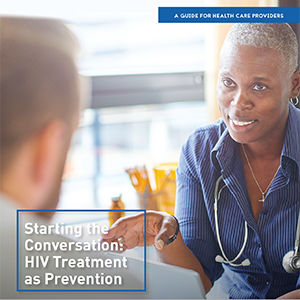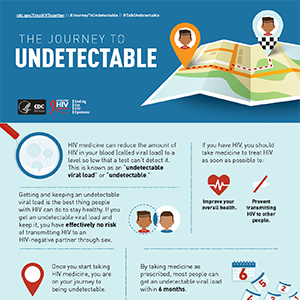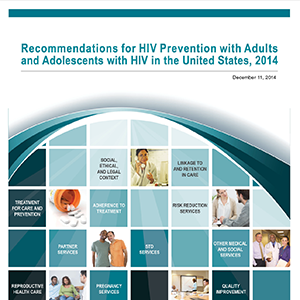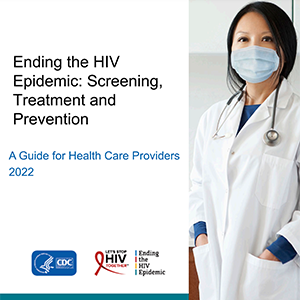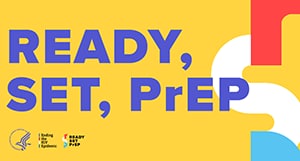How Do I Help Patients Reduce Their Risk of Transmitting HIV to their Partners?
- Get your patients on ART and share the power of treatment as prevention.
- Help your patients assess their risk of transmitting HIV to their partners.
- Engage in brief conversations about risk reduction with your patients at every visit.
Antiretroviral therapy (ART) is a powerful tool to prevent HIV transmission. Health care providers who treat patients with HIV have an important role in supporting HIV prevention. Educating patients about the value of treatment as prevention can help them manage their HIV. Engaging patients in routine, brief conversations about treatment as prevention can also help you become more familiar with each of your patients, including their adherence and transmission risk.
Patients’ health status, relationship status, and personal needs change over time. Therefore, conversations about risk reduction should continue and evolve for as long as the patient remains in care.
Topics of these conversations can include, but are not limited to:
- Adherence to ART and ongoing medical care, even if the patient’s viral load is undetectable.
- Communication of HIV status with others.
- Correct and consistent use of condoms with appropriate non-oil-based lubricants to prevent sexually transmitted infections (STIs), even when negotiations about condom use occur in the heat of the moment.
- The relative risk of HIV transmission associated with various sexual activities (e.g., oral sex is associated with a lower risk of HIV transmission than receptive anal sex).
- How alcohol and/or drug use can impair judgment.
- The use of pre-exposure prophylaxis (PrEP) by partners without HIV, including people planning to become pregnant.
- The use of post-exposure prophylaxis (PEP) by HIV-negative or unknown status partners in emergencies (e.g., when a condom breaks or is not used, and the patient is not virally suppressed).
The Centers for Disease Control and Prevention’s (CDC’s) HIV Risk Reduction Tool shows the HIV risk of various sexual activities when one partner has HIV and the other doesn’t. It also provides tailored information to help your patients understand their risk for transmitting HIV to their partners and how to reduce it.
Click on the accordions below for conversation starters you can use to initiate brief conversations about risk reduction with your patients.
Once you’ve initiated the conversation, you can identify teachable moments where you can help your patient understand how to protect their overall health and prevent transmission to partners.
